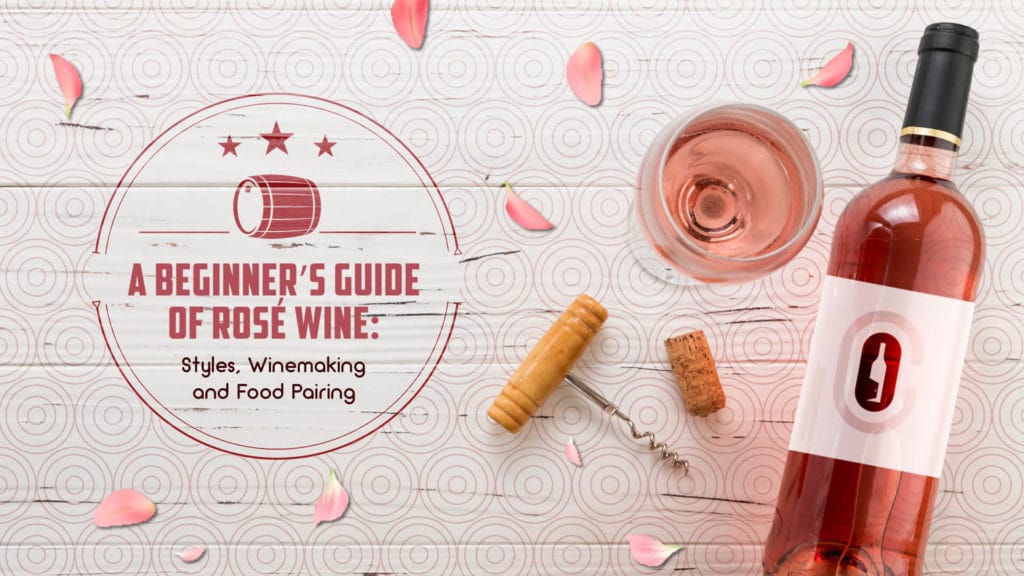Blog
A Beginner’s Guide of Rosé Wine: Styles, Winemaking and Food Pairing
Rosé, commonly known as pink wine, is becoming a trend worldwide not only as a summer wine, but as a serious drink choice. Rosé is not a red wine with color fading out – in fact, it stands out on its own as one of three types of still wine, alongside the red and the white. However, the color of rosé wine is not always pink. Like every flower has nuances from one another, the shade of rosé can vary from pale onion or salmon color, to pink, or even to an intense, dark berry pink. The styles range from crisp and bone-dry to sweeter, full-bodied and fruitier types. So whatever style you prefer, you can always find a rosé for you.
So where does the beautiful color come from? There are three common ways to make rosé wines: direct pressing, short maceration and blending. Direct pressing only extracts only a little color from the skin, as the grapes are crushed and pressed directly after harvest. The most delicate rosé wines are produced by this method. Short maceration allows a longer extraction of flavor and color, therefore the final wines come with a deeper color and more intense style. Blending a small quantity of red wine into a white wine to produce rosé sounds pretty simple, right? Well, it is a method used to make some fruity, inexpensive rosés but not permitted in most wine regions in the EU.
France is best known for fresh and crisp dry rosés. The most popular comes from Provence, where the pale, bone-dry rosés are produced, with a touch of mineral character. Some Syrah based rosés from Rhone Valley are well known for their powerful and spicy character: “Garrigues” and white pepper together with fresh fruit aromas. In Loire Valley, the rosés are usually made from Cabernet Franc, most of them are off-dry.
Italy and Spain are also main producers of rosé wines. It’s called “rosato” in Italian and “rosado” in Spanish. In Italy, rosato made from Sangiovese is typically enwrapped by red fruit flavors with subtle meaty spicy notes. Spanish rosado is made from the country’s two iconic grapes Grenache (Garnacha) and Tempranillo. The rosé wines of Spain are mostly easy-drinking, fruit-driven and fresh. White Zinfandel is the synonym of American rosé, sweet and fruity, it can be enjoyed anytime.
Rosé is a very food-friendly wine, thanks to its freshness and fruitiness. It’s lighter than red wines but it has more body and structure than the whites. A glass of rosé with salad brings you to southern France immediately. If you love Italian cuisine, rosé is perfect for olives, anchovies and prosciutto. Seafood is a loyal companion to crisp rosés. Goat cheese, fried fish, grilled sausages or slices of pizza can be good matches with rosé as well. Even with spicy Asian food, rosé offers a nice acidity and fruit character, without the tannins of red wine, which saves your palette from burning.
Last but not the least: don’t forget to chill your rosé before enjoying it. The ideal serving temperature for rosé is around 7-13℃. Cheers!

